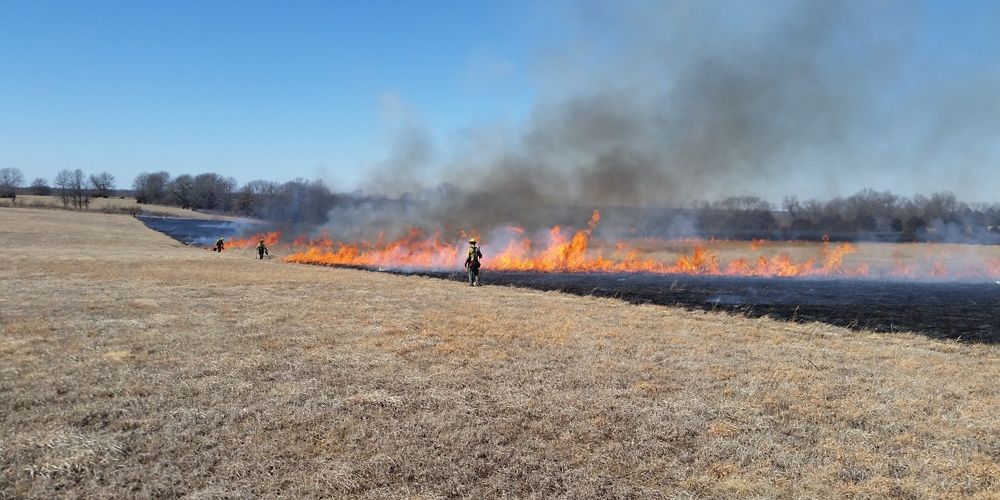Lighting the Way
Prescribed fire is restoring habitats, reducing wildfire risks, and promoting biodiversity across Missouri.
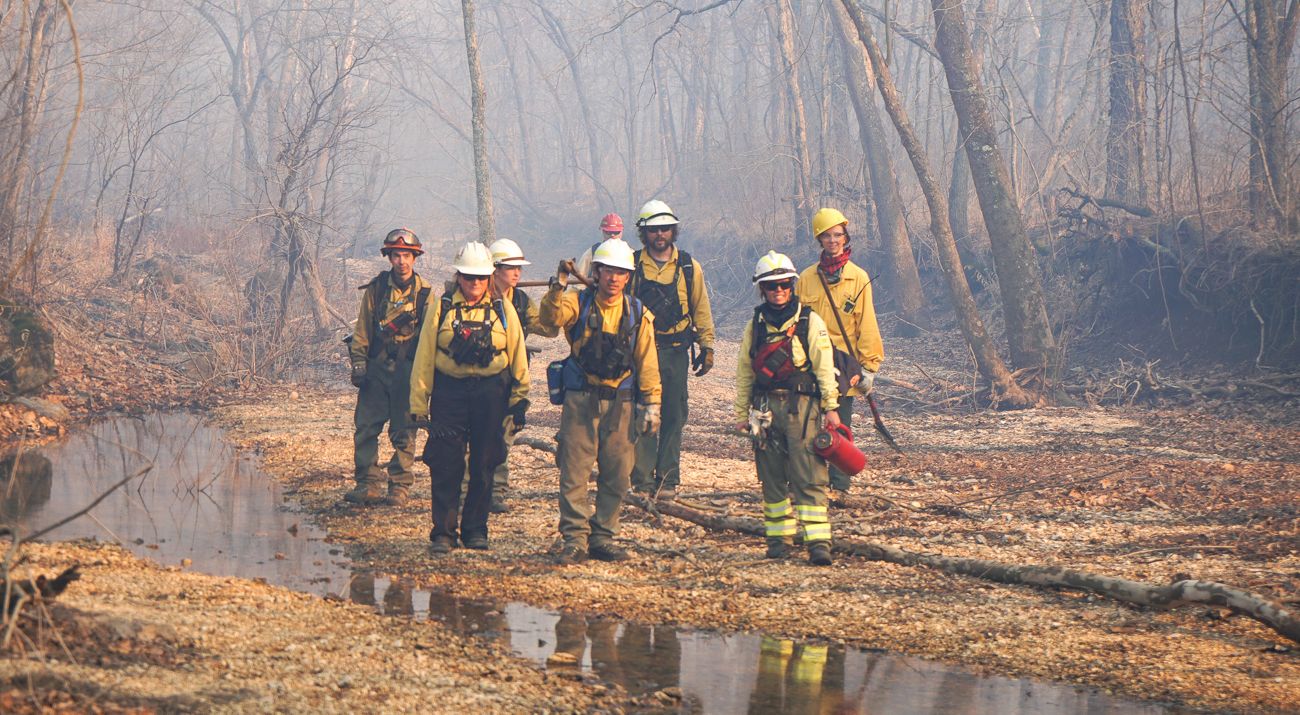
On a crisp March morning in the western Ozarks, members of a fire crew pull on their gear, review the plan a final time and ready their torches.
Their immediate objective is to burn 75 acres of The Nature Conservancy’s Bennett Spring Savanna. A short drive from the famed fishing holes of Bennett Spring State Park, this stretch of rugged hillside is largely overlooked by the anglers lured to the region by the opening of trout season. But it’s a crucial parcel for conservation. A mixture of tall oaks and hickories dot a floor of native grasses that slope to the fork of a creek where rocky islands alternate with trickling waters and wide pools. The flora includes a list of blazing stars, downy blue gentian, royal catchfly and stiff aster that is remarkably similar to plant records written out more than a century ago. It is a unique habitat in the world and a window into what swaths of the Ozarks looked like before European settlers cleared and divided the land.
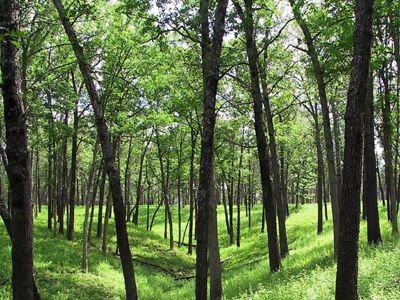
Fire is key to keeping the savanna in balance, ensuring that the trees or invasive plants don’t choke out the grasses and wildflowers. Historically, naturally occurring wildfires had taken care of that, but today there are nearby homes and roads that make an unchecked blaze fraught. Without fire, however, the makeup of the savanna has changed, and that balance has begun to shift.
Instead of a canopy that had covered maybe 25%, it’s now closer to 80%. Years of falling limbs, brush and dry leaves pile up instead of burning away every so often. The result is a savanna that feels more like a forest — and an ever-growing stockpile of fuel should an unexpected fire strike again. Similar conditions have led to unnaturally intense wildfires across the world, which is part of the reason The Nature Conservancy has grown its prescribed fire program to the largest of its kind over the last 60 years.
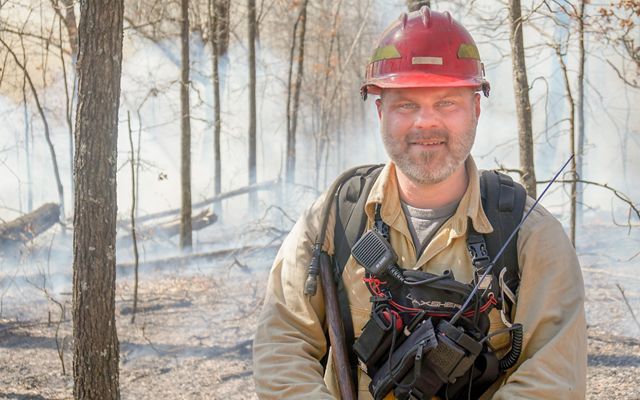
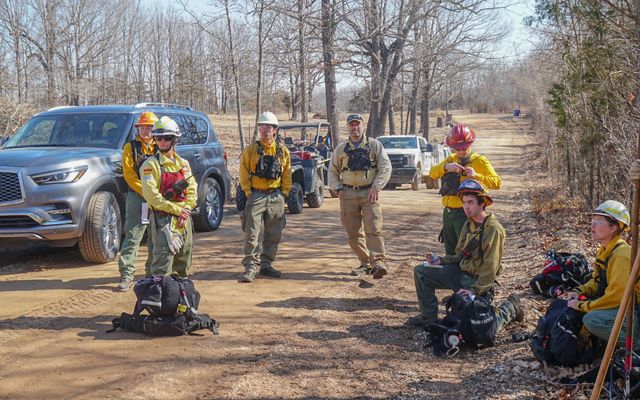
The crew here today will burn the woody underbrush and dead leaves, helping to create space for native grasses, such as tufts of little bluestem and brightly whiskered stalks of bottlebrush.
“We always approach our work from a ‘if you build it, they will come’ mentality,” explains Ryan Gauger, prescribed fire and stewardship manager for TNC in Missouri. “We start with getting the structure correct, and then we kind of let things happen naturally.”
In that way, the day’s operation mimics TNC's larger goals, working toward a world where fire not only plays a balanced, constructive role but where the ranks of its practitioners are larger and more diverse. Get that structure right and more perspectives will bloom.
The controlled burn at the savanna is the first of three spring workshops in Missouri. Each two-week session draws participants from across the country. The crew members at the savanna have arrived by plane and pickup from as far away as Minnesota, Ohio, and even South Africa. Six of the ten people who will work the fire are women, including the two squad leaders.
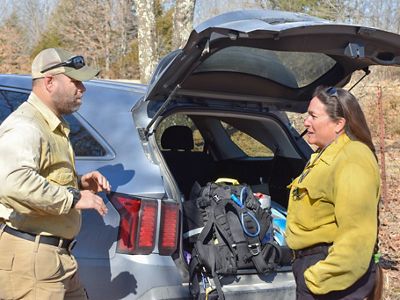
Kelly Martin, a burn boss with TNC’s North America Fire program fire team, has spent the past two weeks with the group, mentoring the workshop’s trainees as well as its leaders. In a federal career that spanned three decades and culminated in a post as fire and aviation chief of Yosemite National Park, Martin often found she was one of the few women on any fire and among an even smaller subset who rose through the ranks to leadership roles. She has made it her mission to ensure the new generation has an easier, less-lonely path.
In the moments before the controlled burn is to begin, Martin gives the crew a quick pep talk as they discuss the day’s operation.
“I’m inspired beyond words,” she says. “The work that you all are doing here is really top-notch and really needs to be done.”
The crew heads to a corner of the savanna for a test fire, the final preview of the fire to come. When all looks good, they set out with their hand tools and torches, lighting from the corner to create a fire that will widen from this starting point and spread steadily across the landscape.
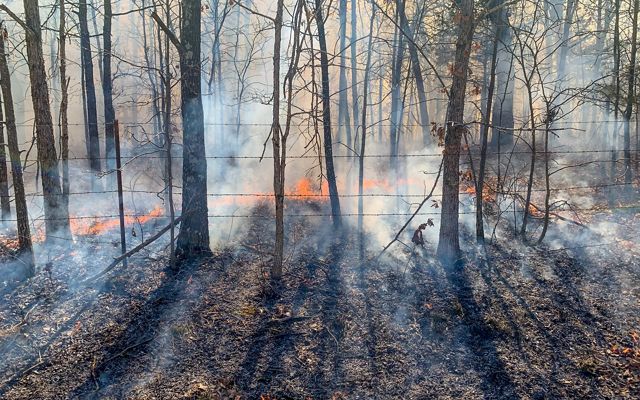
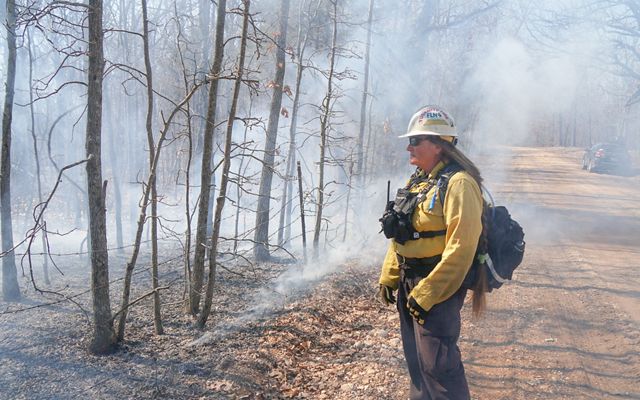
The window for controlled burning is narrow. The goal is to slip in early in the year, clearing out the dead limbs, leaves and brush before they become fuel for raging wildfires during the hot, increasingly drought-stricken months of summer. The cooler, wetter conditions of early spring offer added protection and control, and by the time May hits, a new floor of delicate wildflowers and vegetation will have already risen from the burned ground.
But the timing also requires a bit of luck and flexibility. The weather of late February and early March in Missouri is notoriously unpredictable. The workshop crew managed to conduct a controlled burn earlier in the session at the Wah’Kon-Tah Prairie, a TNC-owned grassland in St. Clair and Cedar counties that is the largest protected prairie complex in the Osage Plains. But then a storm covered the region in snow and ice, calling into question the plans for the Bennett Spring Savanna.
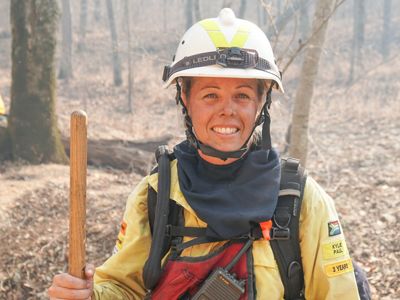
For Kylie Paul, it was the first snowfall she had ever witnessed. A wildlands firefighter from Cape Town, South Africa, she began preparing in 2019 for a trip to attend training workshops in the United States. She was all set to go in 2020 when the pandemic and travel restrictions intervened.
As Paul waited for the pandemic to ease up, she continued to train and work in South Africa. Formerly a student of environmental management and a grade-school teacher, she was drawn to the fire service in 2015 when a massive wildfire hit near her home.
“I remember sitting on my balcony every night, just really wanting to help, like I felt this pull,” she says. “But I didn’t know what I was going to do there, or if I was going get in the way. So I just kind of sat on the bench and watched, took water where I could, and supported how I could, indirectly. And the day I heard about the volunteer fire services, I signed up. On my first day, I realized this is what I want to do.”
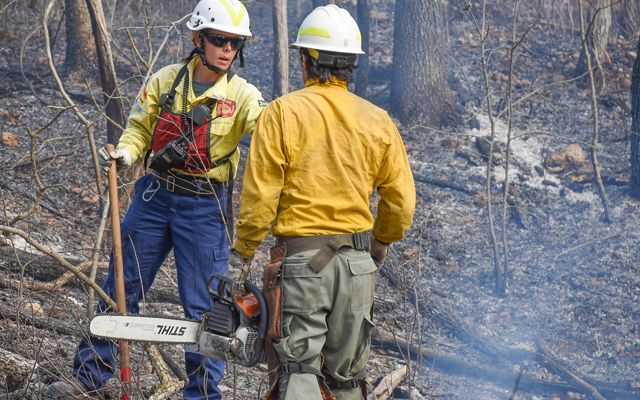
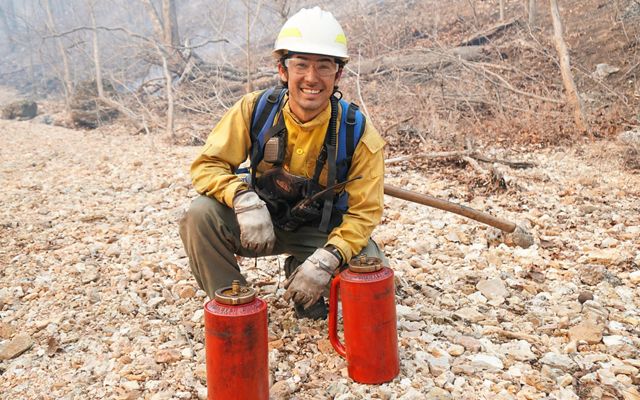
In the six years since, she’s become a veteran of the fire line. Women comprise a large percentage of the number of firefighters in South Africa compared to other countries, as much as 40% of the ranks, Paul says. “But then you take the next step up into leadership, and there’s nobody. There’s only three of us. So we make up almost half of the organization, and we make up only 1% of the leadership.”
Hoping to shift the paradigm, Paul led for two seasons an all-female fire team in South Africa called Juliet Crew, named after the only female phonetic in the alphabet. The work is hard and physical. Wildfires in her current region, which includes Table Rock Mountain, usually involve schlepping equipment into the mountains on foot and using hand tools to essentially beat fires into submission. “It’s pretty tough going, and we’re always one foot in the fire and one foot out,” Paul says.
Fire Up TNC's Hottest Podcast
Kylie Paul and Kelly Martin sit down with us for a special episode of It's in Our Nature
Start StreamingAs she sought guidance in her new profession, Paul connected through social media with women in fire leadership around the world and built an informal network of mentors. That includes Kelly Martin, whose expertise in controlled burning was of particular interest to the South African. Fire is essential to the fynbos, the stunningly diverse mountainous vegetation that grows near Cape Town, and Paul sees controlled burning as an important tool for its protection.
Until the workshop in Missouri, Paul and Martin had never met in person. They quickly form a bond. In Paul, Martin sees the new generation of firefighters who can advance the fire service. And in Martin, Paul sees a mentor and inspiration for the battles she will still have to fight. Paul says she’s ready.
After the snowstorm, temperatures begin to climb in central Missouri. Ryan Gauger of TNC is closely monitoring the weather. He’s eyeing five or six sites — some of them hours apart — as possible alternatives if the Bennett Spring Savanna is still too soggy to burn. He is running out of days in the workshop for this second fire. There is also a CNN crew flying in to film an interview with Kelly Martin and, hopefully, some fire scenes for a “Women in Fire” segment of the cable network’s Represented by CNN series. But if the sites are too wet to burn, they are too wet to burn. Gauger and the crew won’t try to force a fire.
In the end, luck prevails. Temperatures rise into the 60s in the days leading up to the planned date of the fire. The majority of the snow melts, and the leaves dry on the savanna. By the time the crew arrives for the controlled burn, conditions are just about right.
Gauger and Martin will hang back during the fire. They have been leading workshop sessions for the past twelve days, but now it’s time for the trainees to put the lessons into action.
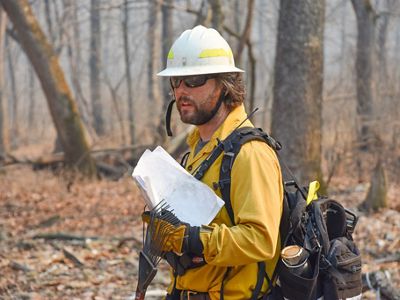
Steve Woods, a former TNC staffer now working for a Michigan conservation organization, is acting as burn boss for the fire under Martin’s watch, catching up on some certification requirements. The crew separates into two squads. Lindsey Reinarz, from TNC in Kansas, will lead Squad B down a steep incline to a creek bed at the southern border of the burn area, lighting the eastern border along a fire break cleared of brush and leaves. From there, they’ll head west across craggy terrain along the slope of a ravine.
Squad A, led by Autumn Jensen of TNC in Minnesota, will head west, moving more quickly along a dirt road. They’ll have an ATV specially equipped with a torch to light the savanna’s northern border as they roll along. Once they reach the western border of the rectangular plot, they’ll cut south on foot to the creek and then work back east toward Squad B. If all goes right, the two squads will reconnect in about four hours as the fire burns from its perimeter in.
Under Reinarz’s supervision, Kylie Paul kicks it off at about noon by lighting a patch of leaves for the test fire. The flames rise a couple of feet and begin to move as the crews set out.
Quote: Kelly Martin
“And without missing a beat, the pilot turned to me and said, ‘Well, girls don’t fight fire.’”
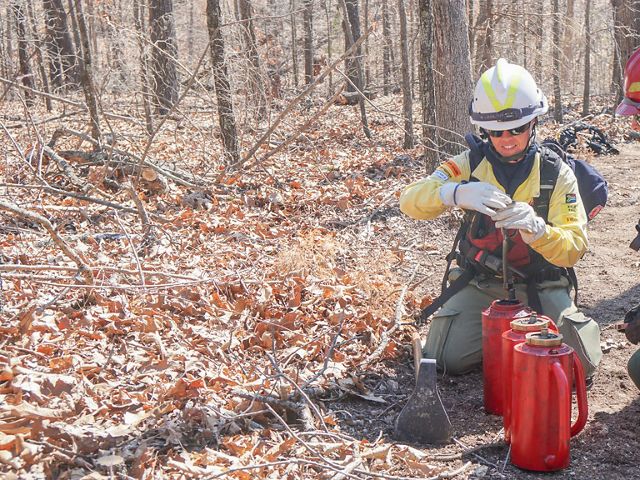
These scenes of young firefighters working together out in the woods warm Kelly Martin’s heart. Earlier that morning, she had outlined for the CNN crew her long and decorated career. The heart of the questioning focused on the obstacles she faced as a woman in a field long dominated by men — and her grit in hurdling them all.
In a particularly poignant example, she described the excitement she felt after landing an opportunity to help fight a wildfire on a remote island. At the time, she was about the same age that many of the trainees at the savanna are now. She was thrilled by the rough, but rewarding work. Riding in a floatplane back to base, she asked the pilot how she could do that full time.
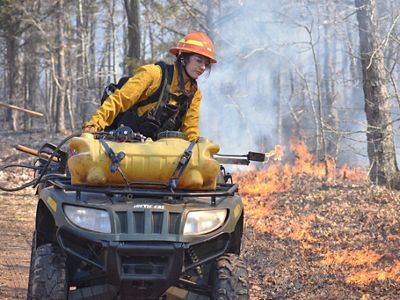
“And without missing a beat, the pilot turned to me and said, ‘Well, girls don’t fight fire,’” Martin recalled.
Ultimately, she proved the pilot and a series of similarly minded men spectacularly and repeatedly wrong throughout her career, but she hopes for a future where women in fire do not have to be pioneers. She sees some signs of hope, not just in the women but in the attitudes of male firefighters.
“Believe it or not, I don’t feel the dismissiveness that I am actually supervising men,” Martin tells CNN. “The men are much more accepting now of me in a leadership role and me providing coaching and mentoring of them. That is a big shift in my lifetime supervised by women.”
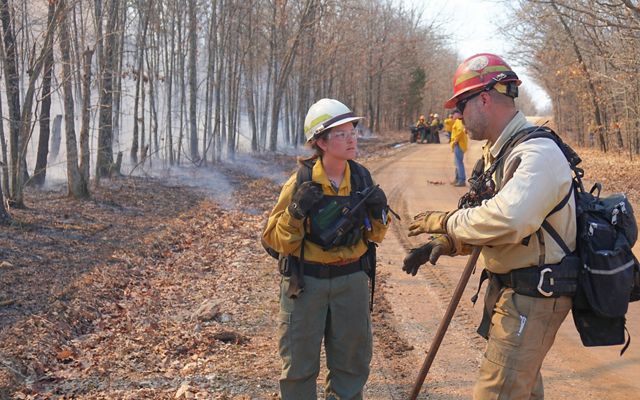
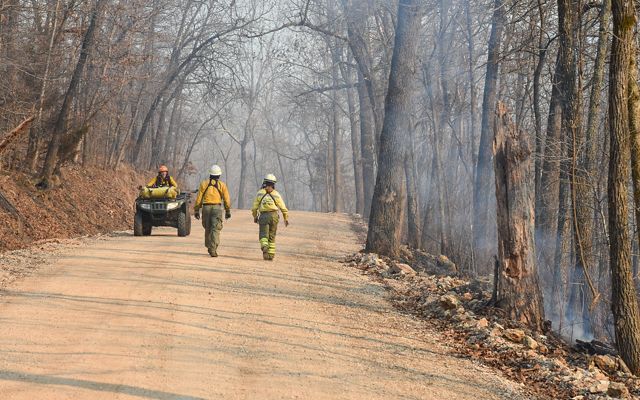
You can see that play out in the interactions between her and Gauger. He is responsible for setting up and operating the workshops, and Missouri is his territory, whereas Martin has flown in from her home in Idaho. But there’s no hint of rivalry when they address the group.
“We need more guys like Ryan,” Martin says.
That model carries over to the crews lighting and managing the fire. Throughout the afternoon, the two squads work around the edges of the savanna, sharing responsibilities as they usher the fire toward the center.
Jensen, one of the operation’s two squad bosses, supervises two men in her job with TNC in Minnesota. She sees parallels in the work the workshop crew is doing to increase the variety of plants and animals on the savanna and TNC’s efforts to diversify the ranks of those conducting controlled burns.
In that regard, it’s not just a matter of fairness but of safety and the quality of the work. Willie Weems, a seasonal fire crew member in Missouri who is on Jensen’s squad, has worked in fire and land stewardship with other organizations and says macho attitudes of male-dominated crews can be dangerous. He opens his National Wildfire Coordinating Group Incident Response Pocket Guide to a section titled “Hazardous Attitudes.” The bulleted list includes warnings about macho and impulsive behavior as well as groupthink.
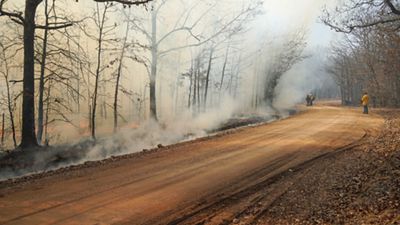
Toward the end of the afternoon, Jensen and Weems reach the creek bed and turn east, lighting the final edge of the burn area. Soon, they meet the other squad just below a set of bluffs. The ravine is a thin haze of smoke, and the low fire continues to creep toward the center.
The fire crews are smudged and weary as they grin and joke. They will head home soon, but they take a few moments to look over the blackened hillside. In the coming weeks, the savanna will begin to reset. New wildflowers will bloom, and shoots will rise from the ashes. The fire won’t solve all the savanna’s problems, but already, through the smoke, you can see the structure beginning to shift.
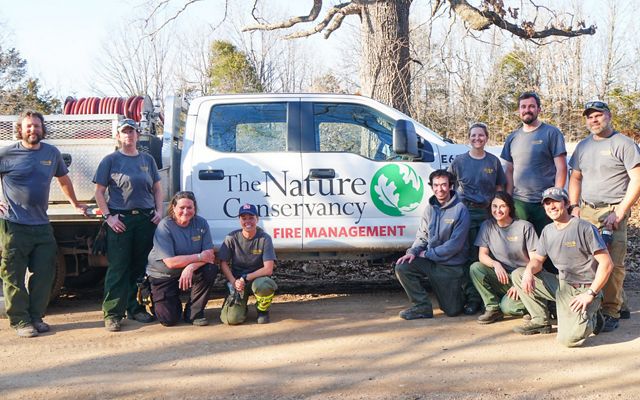
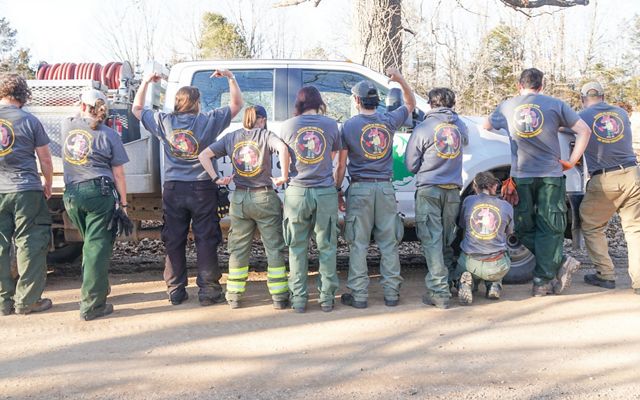
Support Missouri's Fire Program
Prescribed fire is a vital tool in maintaining the health and diversity of our landscapes. Your support helps restore habitats, reduce wildfire risks and promote biodiversity. Together, we can ensure a thriving environment for people and nature. For more information or to support this work, contact Mona Monteleone.
